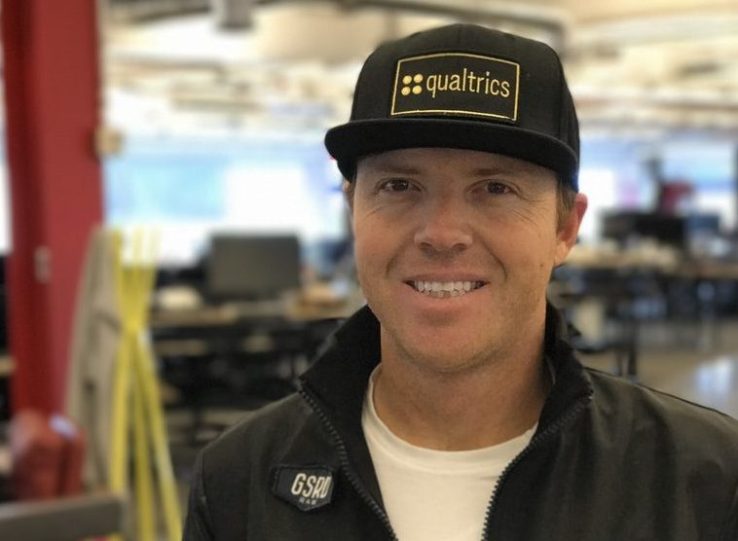

That Qualtrics IPO many have been expecting is on hold for now. The online market research platform has just raised its third round for $180 million at a whopping $2.5 billion valuation.
The Provo, Utah-based company came from much humbler beginnings, bootstrapping the operation for a decade before finally taking financing from Sequoia and Accel in 2012. It has blown up since then, hitting unicorn valuation status two years later, with $150 million in annual revenue. The company now tells me it’s hitting somewhere north of $250 million in revenue this year.
One the outside, the company looks pretty healthy. Smith tells me Qualtrics is profitable — something not many tech companies, even some that have gone public recently, can say. Many, including myself, have speculated, based on those financials and a few other indicators, the company may have been making plans to go public in 2017. While that could still be in the cards, it’s also not unheard of for a company to raise one final round before diving into the public market. Mulesoft picked up another $128 million ten months prior to filing in March, for example.
And Smith has said he plans on going public. It looks like he’s feverishly working towards that goal. Five months ago the startup hired Microsoft veteran Zig Serafin as its COO and just added Atlassian’s CFO Murray Demo, who helped guide that company through its initial $4.4 billion public offering, to the board. Companies often pull in key leadership just before going public and Qualtrics founder Ryan Smith told TechCrunch in a recent interview he was “getting his house in order” in preparation for an IPO event.
An IPO isn’t an exit. It should be the beginning and we wouldn’t be going out if we didn’t think that more wealth could be created post-IPO.
Couple that with a market that has been referred to as a “perfect storm” for filing and it might seem a head-scratcher why Qualtrics would take another round, diluting its equity instead of going public.
But an IPO might have been on the table before Smith decided to go for one more round. Insight Venture’s Jeff Lieberman told TechCrunch he’d discussed with Qualtrics “all different options.”
“[Qualtrics] clearly has the right financial profile. It’s really about positioning. [Smith] doesn’t just want to be a public company. He wants to be an excellent, market-dominating company,” Lieberman said.
But all may not be as it seems, according to Kathleen Smith, a principal at Renaissance Capital who’s been analyzing IPO’s for the past 20 years. “If you are taking rounds of financing and they’re done at high valuations you may be hesitant to go because you may have to do an IPO down round,” she says. “If you do a round at $2.5 billion, you’re not going to want to raise money publicly below that.”
Silicon Valley, she says, has shifted to higher valuations and the public market has become more valuation sensitive over the last few years. That’s one reason she thinks some of the tech companies have been slower to move forward than expected.
Smith, the IPO analyst, also cautions the company may not be meeting profit expectations, even with revenues in the hundreds of millions. But that’s nonsense to Qualtrics’s Smith, who counters he’s not public yet because he doesn’t have to be. “We raised the money because we can,” he said, pointing out other enterprise unicorns have done the same thing before going public.
“An IPO isn’t an exit. It should be the beginning and we wouldn’t be going out if we didn’t think that more wealth could be created post-IPO,” Smith said.
He also told me he wants to reach revenue in the billions before an IPO event. Side note — it took the company a bootstrapped 10 years to reach $50 million in revenue in 2012 and another five years to get to more than $250 million so we might be waiting a few more years for Qualtrics to hit that goal.
But let’s set aside IPO speculation for now and talk about this latest round of funding. Previous investors Sequoia, Accel and Insight Venture Partners came back again to put in for growth financing. In addition to putting cash on the balance sheet, the round also allows Smith to provide some liquidity for early employees and hire more in the C-suite, including a chief financial officer in the near future.
Qualtrics has also just launched what it calls the XM Platform, an experience management platform Smith believes will one day be as ubiquitous as Workday or Salesforce software in every office, but for managing internal feedback and helping organizations uncover key business drivers, predict future customer needs, and retain employees.
“Qualtrics is a one-of-a-kind company that has executed incredibly well,” Sequoia Capital partner Bryan Schreier said in a statement. “They have delivered outstanding, accelerating growth at nine-digit revenue numbers all while staying cash flow positive. That is practically unheard of. It’s an incredible sign of confidence in Qualtrics’ continued growth trajectory and the huge market for its new XM Platform that all of its investors have come back to buy as many shares as they could at this new valuation.”

